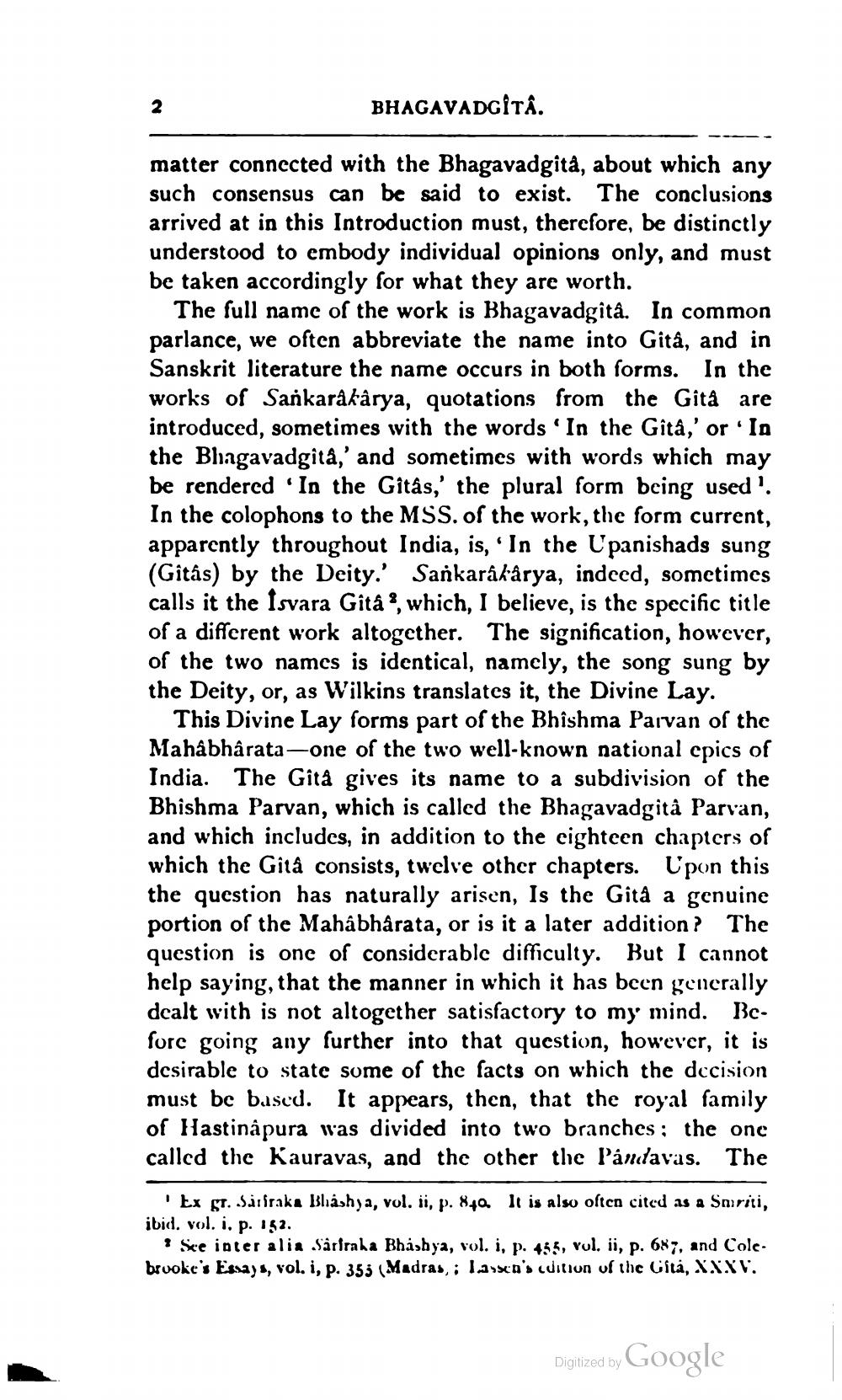________________
BHAGAVADGITA.
matter connected with the Bhagavadgitá, about which any such consensus can be said to exist. The conclusions arrived at in this Introduction must, therefore, be distinctly understood to embody individual opinions only, and must be taken accordingly for what they are worth.
The full name of the work is Bhagavadgitâ. In common parlance, we often abbreviate the name into Gità, and in Sanskrit literature the name occurs in both forms. In the works of Sarkaråkarya, quotations from the Gità are introduced, sometimes with the words 'In the Gitâ,' or la the Bhagavadgita,' and sometimes with words which may be rendered 'In the Gitás,' the plural form being used'. In the colophons to the MSS. of the work, the form current, apparently throughout India, is, 'In the L'panishads sung (Gitás) by the Deity.' Sankaråkårya, indeed, sometimes calls it the Isvara Gita , which, I believe, is the specific title of a different work altogether. The signification, however, of the two names is identical, namely, the song sung by the Deity, or, as Wilkins translates it, the Divine Lay.
This Divine Lay forms part of the Bhishma Paivan of the Mahâbhârata-one of the two well-known national cpics of India. The Gità gives its name to a subdivision of the Bhishma Parvan, which is called the Bhagavadgitâ Parvan, and which includes, in addition to the cighteen chapters of which the Gità consists, twelve other chapters. Upon this the question has naturally arisen, Is the Gità a genuine portion of the Mahabharata, or is it a later addition? The question is one of considerablc difficulty. But I cannot help saying, that the manner in which it has been gencrally dealt with is not altogether satisfactory to my mind. Bc. fore going any further into that question, however, it is desirable to state some of the facts on which the decision must be based. It appears, then, that the royal family of Hastinapura was divided into two branches; the one called the Kauravas, and the other the Pandavas. The
'Ex 57. Siiraka Bliáshya, vol. ii, p. 840. It is also often cited as a Smiriti, ibid. vol. i. p. 192.
Se inter alia Säriraha Bhashya, vol. I, p. 455, vol. ii, p. 687, and Cole. brooke's Essays, vol. I, p. 353 (Madras, ; Lasa's cdition of the Gita, XXXV.
Digitized by Google




